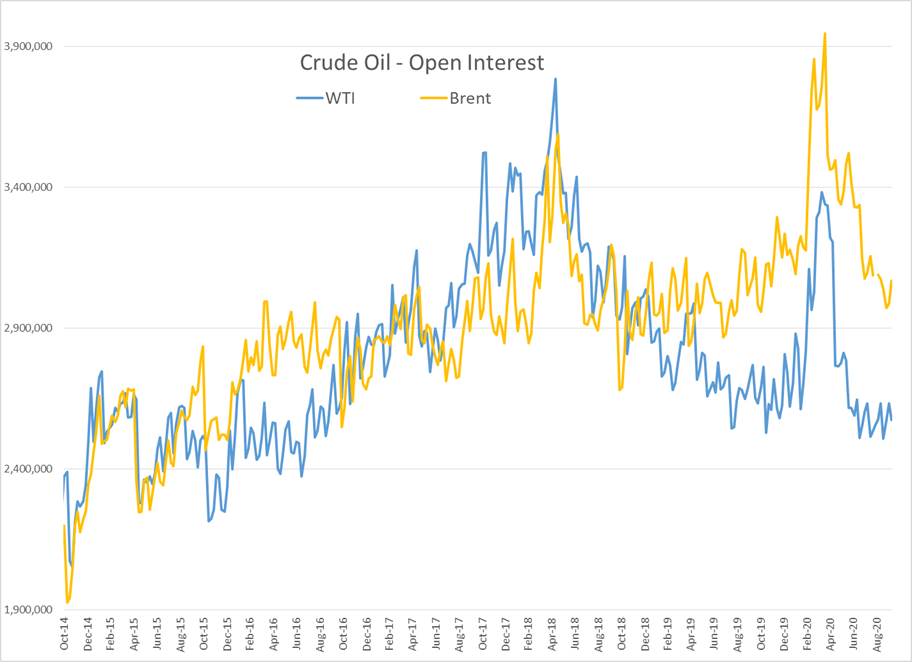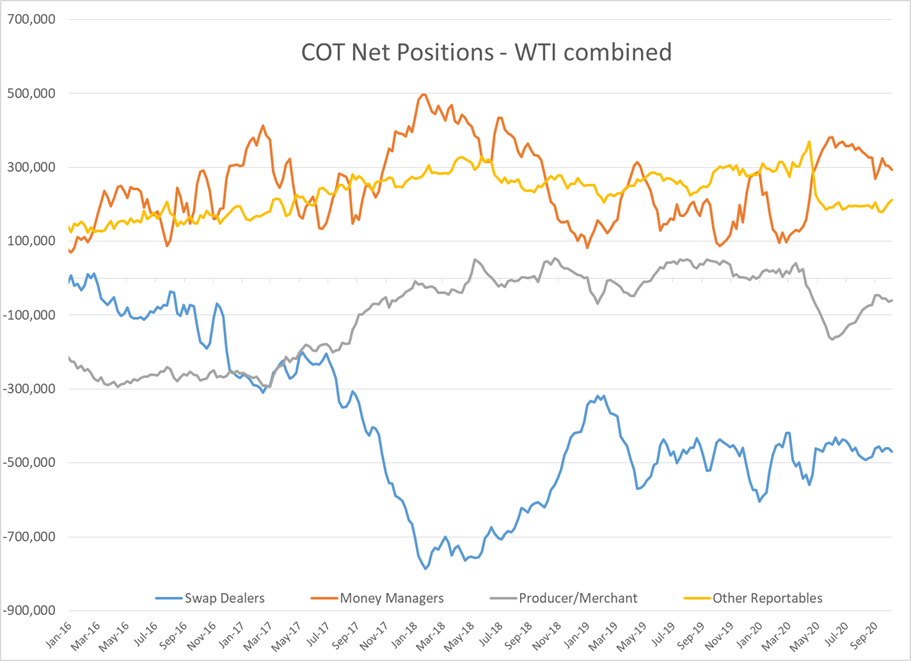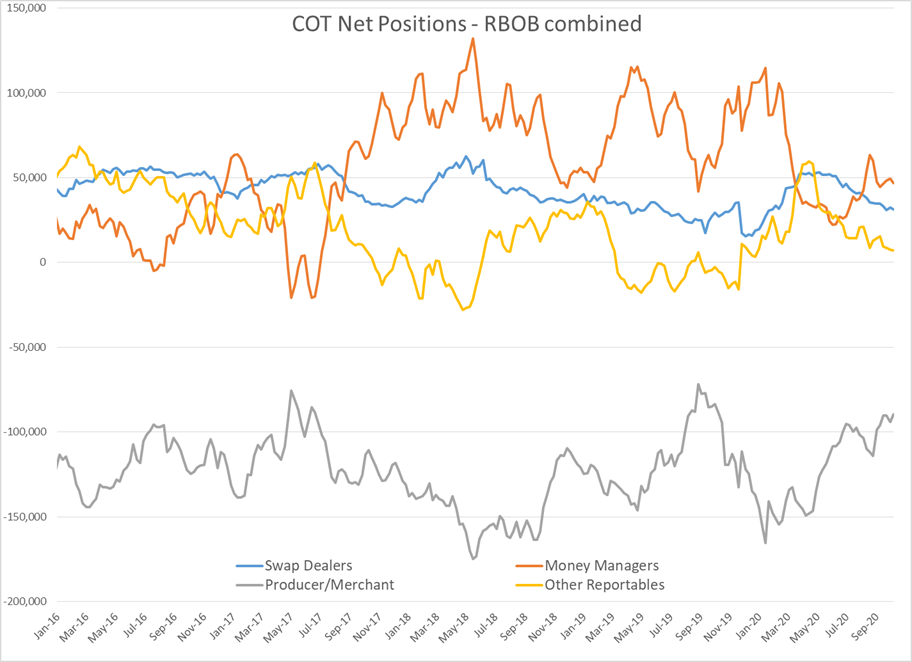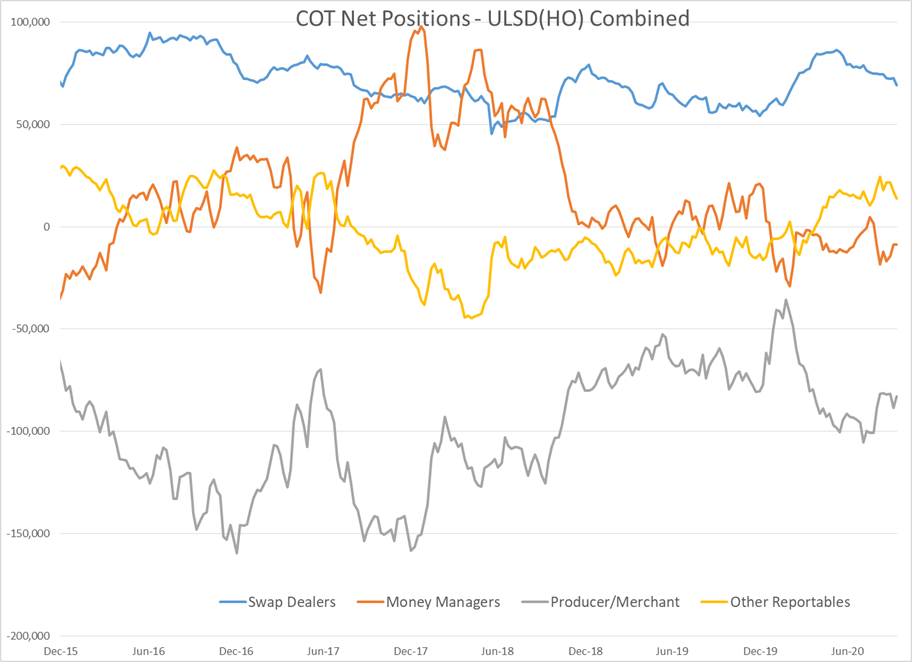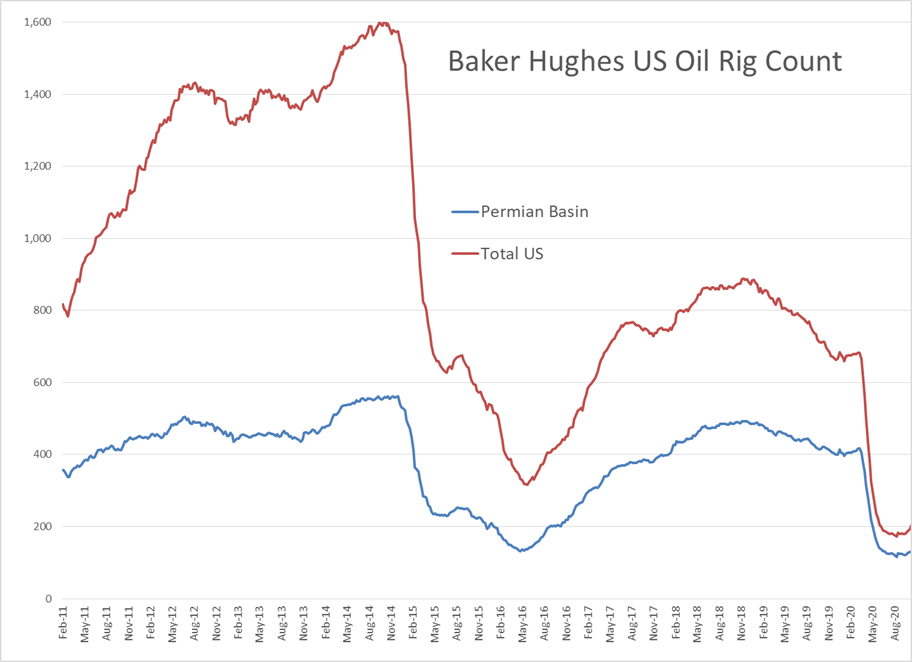Chances Of Stimulus Package Points Equity Markets Higher

It’s a quiet start to the week, with most energy markets moving slightly lower on the day. The sideways trading patterns are still intact for most petroleum futures, with longer term charts favoring more downside this winter. Equity markets are pointed higher to start the week, with credit being given to increasing chances of a stimulus package being forced through congress this week.
China’s refinery runs dipped in September, but remained higher than a year ago and are close to the all-time highs set this summer. That sounds bullish on its own, but inventories are also rising, suggesting that supply is outkicking its coverage from the demand recovery, and will put downward pressure on product prices in the months to come. European refiners are getting squeezed by the increase in Asian refinery capacity, and their own climate laws that are forcing more plants out of business. Something to watch near term is if Brexit negotiations mean more gasoline from the UK will be forced to go to the U.S. to avoid tariffs from the EU.
Money managers trimmed their net length in WTI and RBOB contracts last week, but while adding some small positions in Brent and ULSD. Enthusiasm continues to be lacking in the money flows to energy contracts, as the outstanding positions for most categories of trader are much smaller than they’ve been in years past.
After 10 years, the CFTC finally passed a rule (which was required as part of the Dodd Frank regulations passed after the financial crisis) placing position limits on speculative positions in a variety of contracts in the energy, agriculture and metal markets. It’s no surprise that something that took a decade to agree on would be controversial, and reading the dissenting opinions of CFTC commissioners sheds light on the potential loopholes in the rule. With open interest already on the decline as the funds who tried to convince retail investors that oil futures were a safe investment are now limping towards the exits, it looks unlikely that we’ll notice anything different following the passing of the new rule.
Baker Hughes reported 12 more oil rigs were put to work last week, a fourth straight weekly increase, and the largest since January. The interesting part of the increase this week is that Utah and Wyoming – which had just one active oil rig between them last week – saw five new rigs put to work. It’s much less surprising that Texas had seven rigs added, although none of them were in the Permian.
Epsilon is expected to be named as a storm in the next day or two, with the NHC giving the system 100% odds of further development today. The storm is expected to stay offshore as it heads north past Bermuda, and should not approach the U.S. Coast, although some delays for vessel traffic along the East Coast could occur due to strong winds and some coastal flooding potential. The system in the Caribbean is still given just 20% odds of development.
A federal court ruled Friday that a default had occurred on PDVSA’s long-contested bonds, which were deemed valid and enforceable by the decision. That decision could ultimately force a sale of Citgo, which was used as collateral for the bonds, but the U.S. refinery is still protected by the U.S. treasury sanctions on Venezuela, at least through January.
Click here to download a PDF of today's TACenergy Market Talk.
News & Views
View All
Energy Futures Are Caught Up In Headline Tug-O-War This Morning
Energy futures are caught up in headline tug-o-war this morning with Canadian oil production concerns and a positive US GDP report trying to push prices higher while sinking Chinese demand worries and Gaza ceasefire hopes are applying downward pressure. The latter two seem to be favored more so far this morning with WTI and Brent crude oil futures down ~45 cents per barrel, while gasoline and diesel prices are down about half a cent and two cents, respectively.
No news is good news? Chicago gasoline prices dropped nearly 30 cents yesterday, despite there not being any update on Exxon’s Joliet refinery after further damage was discovered Wednesday. Its tough to say if traders have realized the supply situation isn’t as bad as originally thought or if this historically volatile market is just being itself (aka ‘Chicago being Chicago’).
The rain isn’t letting up along the Texas Gulf Coast today and is forecasted to carry on through the weekend. While much of the greater Houston area is under flood watch, only two refineries are within the (more serious) flood warning area: Marathon’s Galveston Bay and Valero’s Texas City refineries. However, notification that more work is needed at Phillip’s 66 Borger refinery (up in the panhandle) is the only filing we’ve seen come through the TECQ, so far.
Premiums over the tariff on Colonial’s Line 1 (aka linespace value) returned to zero yesterday, and actually traded in the negatives, after its extended run of positive values atypical of this time of year. Line 1’s counterpart, Line 2, which carries distillates from Houston to Greensboro NC, has traded at a discount so far this year, due to the healthy, if not over-, supply of diesel along the eastern seaboard.
Click here to download a PDF of today's TACenergy Market Talk.

WTI And Brent Crude Oil Futures Are Trading ~$1.50 Per Barrel Lower In Pre-Market Trading
The across-the-board drawdown in national energy stockpiles, as reported by the Department of Energy yesterday, stoked bullish sentiment Wednesday and prompt month gasoline, diesel, and crude oil futures published gains on the day. Those gains are being given back this morning.
The surprise rate cut by the People’s Bank of China is being blamed for the selling we are seeing in energy markets this morning. While the interest rate drop in both short- and medium-term loans won’t likely affect energy prices outright, the concern lies in the overall economic health of the world’s second largest economy and crude oil consumer. Prompt month WTI and Brent crude oil futures are trading ~$1.50 per barrel lower in pre-market trading, gasoline and diesel are following suit, shaving off .0400-.0450 per gallon.
Chicagoland RBOB has maintained its 60-cent premium over New York prices through this morning and shows no sign of coming down any time soon. Quite the opposite in fact: the storm damage, which knocked Exxon Mobil’s Joliet refinery offline on 7/15, seems to be more extensive than initially thought, potentially extending the repair time and pushing back the expected return date.
There are three main refineries that feed the Chicago market, the impact from one of them shutting down abruptly can be seen in the charts derived from aforementioned data published by the DOE. Refinery throughput in PADD 2 dropped 183,000 barrels per day, driving gasoline stockpiles in the area down to a new 5-year seasonal low.
While it seems all is quiet on the Atlantic front (for now), America’s Refineryland is forecasted to receive non-stop rain and thunderstorms for the next four days. While it may not be as dramatic as a hurricane, flooding and power outages can shut down refineries, and cities for that matter, all the same, as we learned from Beryl.



